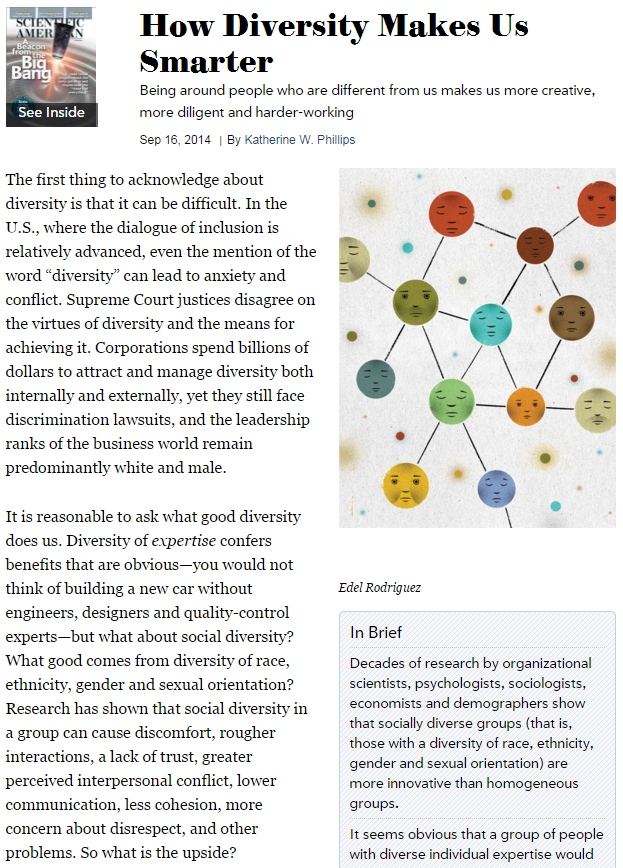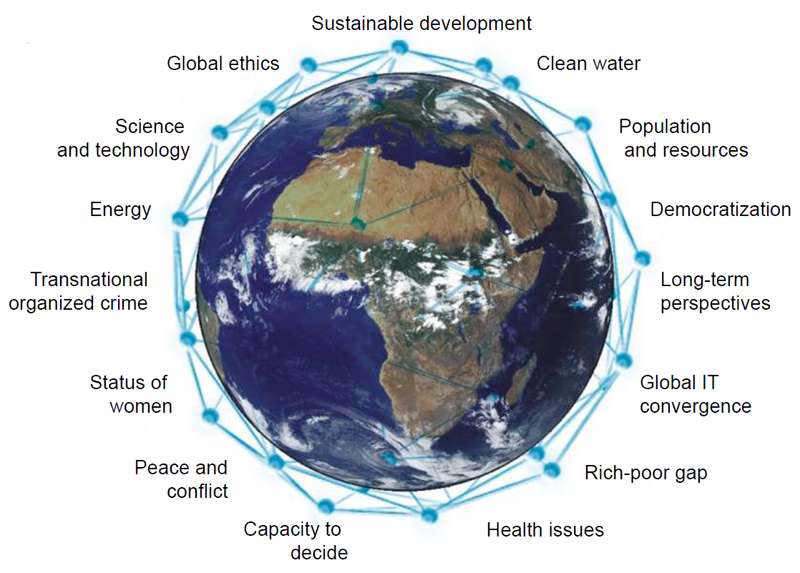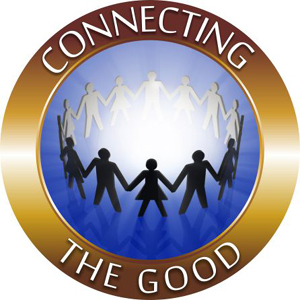From: Bruce Schuman
Type: Forum
Group: Alliance Plenary
Subject: Collaborative Tagging
Date: October 12, 2014
Dear Nirmalan --
Please explain your idea. Why is it true? What do you mean by "a network based on disagreement"? Why would "a network based on disagreement" be stronger than "a network based on agreement"? What do you mean by those terms? Please illustrate.
Perhaps you are commenting on one end of the "similarity/difference" spectrum. 
The current issue of Scientific American Magazine has an interesting article on this theme, having to do with the nature of creativity in a "diverse" context -- ie, a context where people "do not all agree" -- or "are different".
In a context where "people are all the same" -- there is little motivation for creativity. In a context where "people are different" -- there is either unpleasant struggle and clash -- as we see in the Islamic world today, just for one example -- or in "red state / blue state" conflicts in the USA.
One major point of the "collaborative tagging" concept is that it does not emphasize "agreement OR disagreement". It gives people an opportunity to speak for themselves as unique individuals -- and their choices then illustrate both "agreement" (where people have selected the same or similar things) and "disagreement" (where they have not selected the same or similar things).
But if the concern IS "what do we agree on?" -- or "what factors tend to be most common among most of us?" -- we can know the answer in solid ways. A lot of internet marketing is based on this kind of aggregation of choices, and it obviously works very well. If I know what you have "clicked" -- I know a lot about you. If we can find ways to lead people towards integral and holistic choices, we will have a better chance to build a holistic and integral world.
Here's a screen shot from the Scientific American article -- "How Diversity makes us Smarter" --
http://www.scientificamerican.com/article/how-diversity-makes-us-smarter/

--- On Sun, Oct 12, 2014, Nirmalan Dhas wrote ---
A network based on disagreement will be much stronger than one based on agreement...
N --- On Sat, Oct 11, 2014, Bruce Schuman wrote ---
I think where this is going -- is towards a very simple universal activist interface, designed to support collaboration among all kinds of groups and activists working for a better world.
Basic design to make it work:
- keep it absolutely simple
- weed out all possible controversy and points of disagreement
- make it applicable for every sector and every issue
So, let's say this is a big-picture holistic image of problems/issues in the world -- all interconnected, all critical, all demanding collaborative solutions:

We need a way to get 100,000,000 citizens, or a billion, and thousands of NGOs (non-governmental organizations, activist groups of every kind who see something like this vision, or care passionately about some part of it), all interconnected through a very basic network, in a form that can create a million alliances on every possible interconnected point of concern.
In this holistic/global context, it's about every issue at the same time, at all levels of social organization. Every issue is connected to every other issue, in an interdependent mutually-influencing way. We need to see this, model and map it, and convene a local-point adjudication and balancing of those dimensions at that local point.
Levels of categorization of this process might look like this:
- 12 basic sectors of the "wheel of co-creation", top-down hierarchical taxonomy defined by intergroup consensus
- 15 defined issues of critical international importance
- 12 general areas of concern for any community
- strict hierarchical/scientific taxonomy, rigid categories with bottomless capacity for detail
- organizational/interpersonal correlation, similarities/affinities, points of alliance
- model of neural structure in the human brain
All of this can be extremely fluent, combining the stability of a top-down ("hierarchy") rigid taxonomy with the absolute fluency of bottom-up ("circle") tagging.

This is the essential design for a "universal alliance engine" that can interconnect constructive motivation wherever it arises.
Put simply, this is what we are doing:


------
------
|